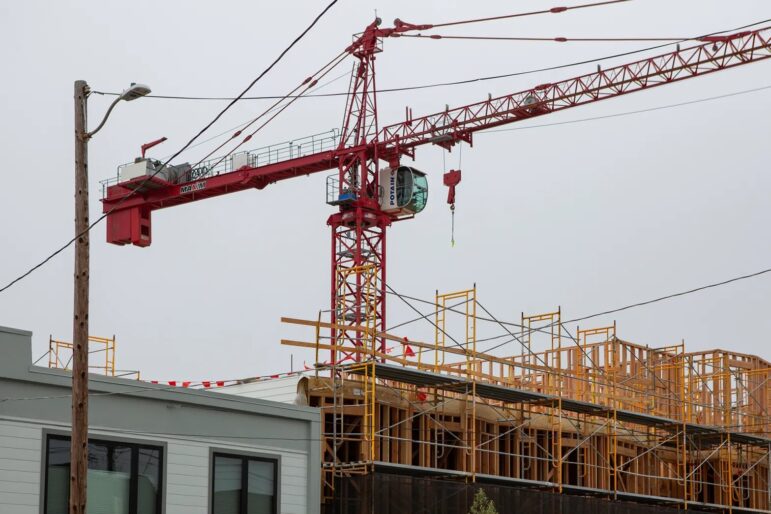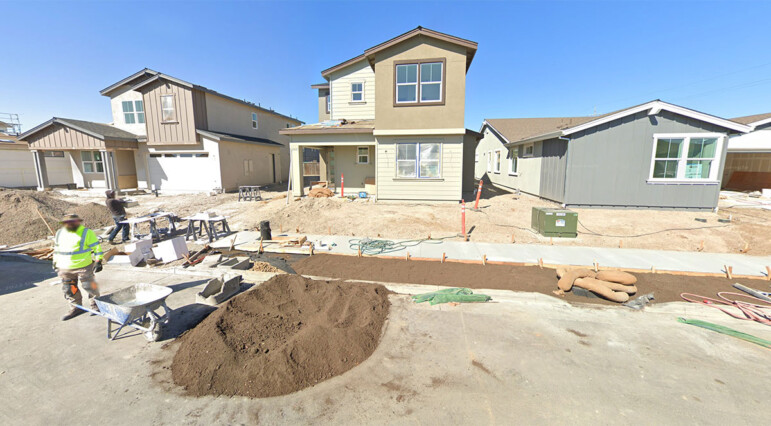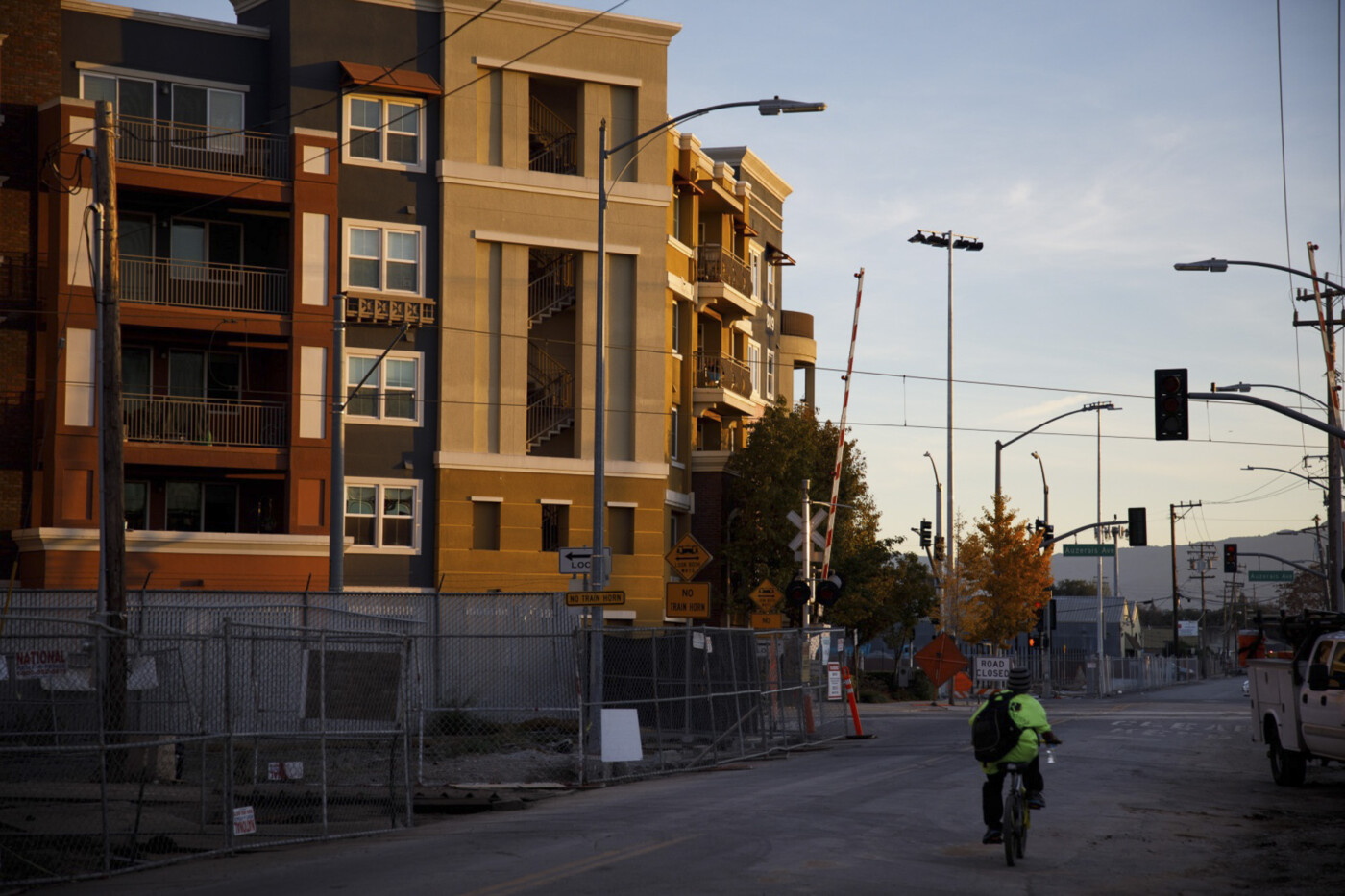It’s put up or shut up time for dozens of cities across the San Francisco Bay Area.
Last January, local governments across the region were required to submit “housing elements” to state regulators — future development blueprints that spell out how each jurisdiction intends to make room for its share of the more than 2.5 million new homes the Newsom administration wants to see built across California by the end of the decade.
One year later, on Jan. 31, many of those same jurisdictions are now required to turn key components of those blueprints into law. That means re-inking their zoning maps, converting thousands of suburban-style tracts into apartment-ready parcels and proving to the state that they are, in fact, going to do what they said they would do to address California’s chronic housing shortage.
The Bay Area zoning crunch is just the latest inflection point in a years-long tussle between California’s housing agency and local governments over how many new homes California needs to plan for and where this anticipated influx of development ought to go. The Bay Area’s end-of-month due date is the first big one in a series of rolling regional deadlines. Next up: Santa Barbara County on Feb. 15.
Whether Bay Area local governments comply — and how the state responds to those that don’t — could indicate just how seriously the Newsom administration takes its ambitious housing goals.
“This is kind of the test case,” said Will Sterling, a land use attorney with the San Francisco firm Holland & Knight, which regularly represents real estate interests in cases against development-averse cities. “It’s going to be interesting to see what (the state) does, how firm they are.”
Developers, attorneys, elected officials and housing advocates are watching closely because this is uncharted territory. For more than 50 years, California’s Department of Housing and Community Development has been setting eight-year planning goals for cities and counties, but only recently have state bureaucrats had the legal and political backing to drop the hammer of serious litigation and funding cuts on municipalities that don’t play along.
Suddenly, everyone is taking the once-obscure “Regional Housing Needs Allocation” process seriously.
“It’s been a doozy this time,” said Michael Brilliot, deputy planning director for San Jose. On Tuesday, the city council there raced through a final round of zoning changes to beat the end-of-the-month deadline. Compared to past cycles, Brilliot said the city had to triple the number of employees tasked with planning San Jose’s housing future from two to six.
How forcefully Newsom’s housing department plans to wield its new hammer is an open question, though its special treatment of San Francisco earlier this winter may offer a hint.
After conducting an unprecedented audit of the city last year, the department called upon San Francisco to overhaul its ponderous permitting process under threat of litigation, funding cuts and the possible revocation of its local planning authority. The city’s Board of Supervisors ultimately blinked, passing Mayor London Breed’s proposed reform package. The state’s housing department signed off on the changes last week.

Bay Area cities and counties “know that they’ll take on a lot of risk by blatantly not complying” come Jan. 31, said Jenny Silva, an advocate for denser development in Marin County and board chair for the Marin Environmental Housing Collaborative. “They see what happens in San Francisco. They hear what happens elsewhere.”
Even with the state breathing down its neck, meeting the deadline has proven to be a “heavy lift” for pint-sized Fairfax in Marin County, said Mayor Barbara Coler.
At a recent town council meeting, where discussion and debate lasted three hours, public commenters agonized over what denser construction would do to the “heart and soul” of the town of less than 7,500, long-defined by its “village-like quality.” Some raised concerns about heightened fire risk, while others promised litigation and threatened the elected officials at the dais with recall campaigns.
Coler said she too would have preferred the state require Fairfax to plan for fewer homes (the town is setting aside space for 540) and that she and her colleagues had the power to require new developments to set aside more units for lower-income residents.
But when locals encourage the city to fight back, she said she points to the community’s sheer need for extra places to live.
“What I tell folks is, ‘Who do you think is waiting on you in the restaurant? Don’t you want them to live here?’” Coler said.
It’s not surprising that so many local officials across the region are facing a special kind of political pressure as the rezoning deadline approaches.
Housing elements are big picture plans that identify development sites and commit to future policy changes. In their high-level abstraction, they can sometimes read like the urban planning equivalent of a vision board.
Zoning rules, in contrast, are “the nuts and bolts of how to take a site and get a certain number of units on it…rezoning is really where the rubber meets the road,” said Martha Battaglia, a planner with the nearby city of Corte Madera, which has already met the state’s upcoming deadline.
Changing a zoning code puts to paper a city’s decision to raise maximum building heights, reduce parking requirements or increase the allowable density of a specific parcel. These are changes that neighbors can readily identify, envision and, frequently enough, dread, bemoan and rally against.
Not every city and county is feeling the heat equally. State law gives jurisdictions that followed the rules earlier in the process a more leisurely schedule, while tightening the screws on scofflaws.
That places cities around the state into three buckets:
- On time: Cities that had their housing plans certified prior to a drop-dead deadline — which vary across the state — have another three years to make any necessary zoning changes. Of the Bay Area’s 109 cities and counties, which had until May 31, 2023, fewer than 30 fall into that category.
- Forgivably late: Those that got their elements approved, but after that deadline, have just one year to follow up with zoning changes, if required. In the Bay Area, that’s Jan. 31.
- Unforgivably late: Cities and counties that still don’t have certified housing plans by the end of that one-year deadline will be deemed out of compliance and open to a slew of possible legal and financial penalties until they do their rezoning too.
Most of Southern California faced an earlier compliance deadline, but all jurisdictions except for those in the “unforgivably late” category received a legislative extension and now have until next year.
The state plans to review the work of the Bay Area cities and counties that are on the hook for rezoning, said housing department spokesperson Alicia Murillo, in an email. If found lacking, those jurisdictions will be issued a warning and given 30 days to catch up. After that, the department “will revoke” its findings that those local governments are complying with state housing law.

The consequences for that will depend in part on how tough the state decides to be. For local governments they range from irksome to catestrophic.
Included among the possible penalties listed in state law are cuts in state funding for affordable housing and transportation. The state’s housing department could also refer a city to the state Attorney General, who has shown a past eagerness to take local governments, like Huntington Beach, San Bernardino, and Coronado, to court over failure to plan for enough new housing.
More extreme consequences — sitting, mostly dormant, in the state’s government code — include the automatic approval of certain proposed affordable housing developments. The state could also ask a court to either suspend entirely a city’s ability to issue new permits until it follows the rules or to put its entire planning apparatus into receivership.
Jurisdictions without certified housing plans also open themselves up to the so-called builder’s remedy, in which developers can completely ignore a city’s zoning map, building as much as they like wherever they like, so long as 20% of the units are designated affordable.
“There’s quite a bit of discretion built into whether HCD wants to go nuclear on a jurisdiction,” said Sterling with Holland & Knight. But if not for political reasons, the state’s housing department may be limited in how aggressive it can be state-wide.
“They certainly have cities that are more on their radar than other cities. They don’t have all the staff in the world,” said Sterling. “If only everyone got the San Francisco treatment.”
Where the state declines to step in, there are other sheriffs in town.
Matt Gelfand, attorney with the legal nonprofit Californians for Homeownership, said he doesn’t expect the state to be “ultra aggressive” in looking over each jurisdiction’s shoulder as it redraws its zoning maps. “Nor do I think that’s necessarily the role of the state,” he said.
That, in Gelfand’s view, is his job. “We are ultra, ultra aggressive,” he said.
The nonprofit, sponsored by the California Association of Realtors, has sued roughly a dozen cities across the state for failing to plan or zone for enough housing. Last month, they secured a judgment from a Southern California judge against Beverly Hills for that city’s failure to pass a state-sanctioned housing plan on time. The penalty: The government of the tony enclave lost its ability to issue any new construction and remodeling permits, save those that would bring it into compliance with state law.
The group also took La Cañada Flintrdige and Hawaiian Gardens to court last year, forcing both to re-do their zoning maps. In December, Gelfand asked a court to subject the city of South Pasadena to the Beverly Hills permit moratorium treatment, but rescinded the request after city officials agreed to conduct more rezoning.
“That is ultimately the point: To provide the right carrots and sticks to get folks to come into compliance,” said Gelfand.
Last week, South Pasadena’s city council voted to nearly double the number of new units that can be constructed in parcels in some of the city’s denser neighborhoods. Mayor Jon Primuth said it was the city’s “intent all along” to do so, lawsuit or not.
South Pasadena’s housing element still hasn’t been certified by state regulators, a fact the mayor attributed in part to the state’s approval process itself. “I think everyone would have to agree, given the number of revisions cities have had to make over and over, that there was a lack of clarity,” he said.
City officials in the Bay Area may ultimately have the plight of Beverly Hills and South Pasadena in mind as Jan. 31 approaches. That, anyway, is the hope of Leora Tanjuatco Ross, organizing director with YIMBY Law, another regular on the housing element lawsuit circuit.
“Historically these have just been paper exercises, they’ve been empty promises,” she said of the state’s planning process. “What we’re trying to do is make sure that these housing element policies are actually implemented this time.”
“If a city commits to doing a policy and they don’t pass it, that is grounds for a lawsuit,” she added.
In San Jose, the city is facing double deadline pressure. The Bay Area’s largest city has yet to have its housing element certified by the state, though a draft is under review by the housing department. With a final change to its zoning code, enacted with a unanimous early-evening vote by the council, city officials are hoping to convince state regulators to sign off on both plan and zoning maps before Jan. 31.
But even if the city is able to get everything squared away in time, there are more housing debates to come, said Brilliot, the planning director. Housing elements are more than just a list of sites ripe for development. They also include pledged policy changes for the coming years. San Jose has more than 130 of them in its draft proposal — and there are some biggies.
They include cutting local restrictions on infill development, allowing for taller and denser buildings if developers include affordable units and allowing small multifamily housing projects across most of the city’s traditionally suburban-style neighborhoods.
“When we come back down the road it’s going to be messy,” said Brilliot. “We’re going to have to have a conversation about revising the sacredness of single family zoning…This is just the beginning. There’s a lot of work to do.”
